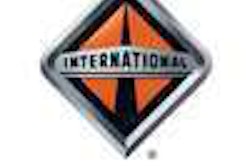Due to the threat of regulatory and tort liability, carriers have little choice but to discipline drivers for failing to comply with hours of service – even if running legal is not the most practical or safest option. So fleets must manage driver fatigue in the context of strict HOS compliance.
Fleets increasingly are voluntarily using electronic logs with their onboard computing and mobile communications systems. “Trucking is stressful enough,” says Brian Keller, president of Keller Logistics, a 92-truck fleet based in Defiance, Ohio. Keller Logistics has been using electronic logs from PeopleNet for several years. “When you are not running legal, drivers stop for three, four, six hours at a time. They are always on the move and always trying to make up time. That’s where fatigue happens.”
One consequence of using electronic logs is strict accountability. Management must pay close attention to productivity, Keller says. For example, a lane with a transit time of 11 hours and 15 minutes may not be serviceable since it will require a two-day run.
However, using electronic logs is still no guarantee that drivers will obtain the quality and duration of sleep they need. Scientific studies have found that fatigue is greatest between midnight and 6 a.m., and that any less than six hours of continuous sleep can cause daytime drowsiness. This is true even for veteran truck drivers.
Shipping and receiving activities typically occur during the day. To make appointments on time, drivers often wake long before 6 a.m. and start their 10-hour break in the late afternoon. Most people could not fall asleep at home in the early evening – let alone in the cab of a truck.
So managing driver fatigue goes beyond ensuring HOS compliance. To manage fatigue as a separate entity, some carriers use software applications to certify, for example, that drivers are spending at least six hours of their 10-hour break between 9 p.m. and 9 a.m.
Circadian Technologies has developed such a program that considers position histories and logbook information to calculate driver fatigue scores. Users can monitor driver compliance to their company policies for obtaining rest.
In March, Innovative Computing Corp. released a driver monitoring system called IES Aware. Available as an operations module, IES Aware allows the user to monitor a driver’s movement by sending alerts if any driving events exceed established parameters, such as excessive continuous driving or driving during hours when the driver may be fatigued, the company says.
In some cases, the root cause of driver fatigue isn’t driver behavior. A driver’s lifestyle, poor sleep habits, diet, age, caffeine consumption, cigarette smoking and health conditions all contribute to fatigue. But often, even these situations are just symptoms of a respiratory problem called sleep apnea, says Wendy Sullivan, vice president of project implementation for Precision Pulmonary Diagnostics (PPD).
Sullivan, a registered nurse and former occupational health manager at Schneider National, teamed up with Dr. Mark Berger to create a Web-based screening tool for sleep apnea specifically for commercial truck drivers. Drivers answer a questionnaire that helps identify them as having a high, moderate or mild risk of sleep apnea. PPD helps high-risk drivers obtain a sleep study from a nationwide clinical network and receive a custom-fit CPAP machine. Fleets can even remotely monitor the time and duration that drivers use the CPAP machine, Sullivan says.
Technology can go only so far in ensuring drivers receive quality rest. Drivers themselves must understand fatigue and be able to respond to it. Fleets on the leading edge of technology also are providing education, training and even medical assistance to treat drivers with sleeping disorders and fatigue.












